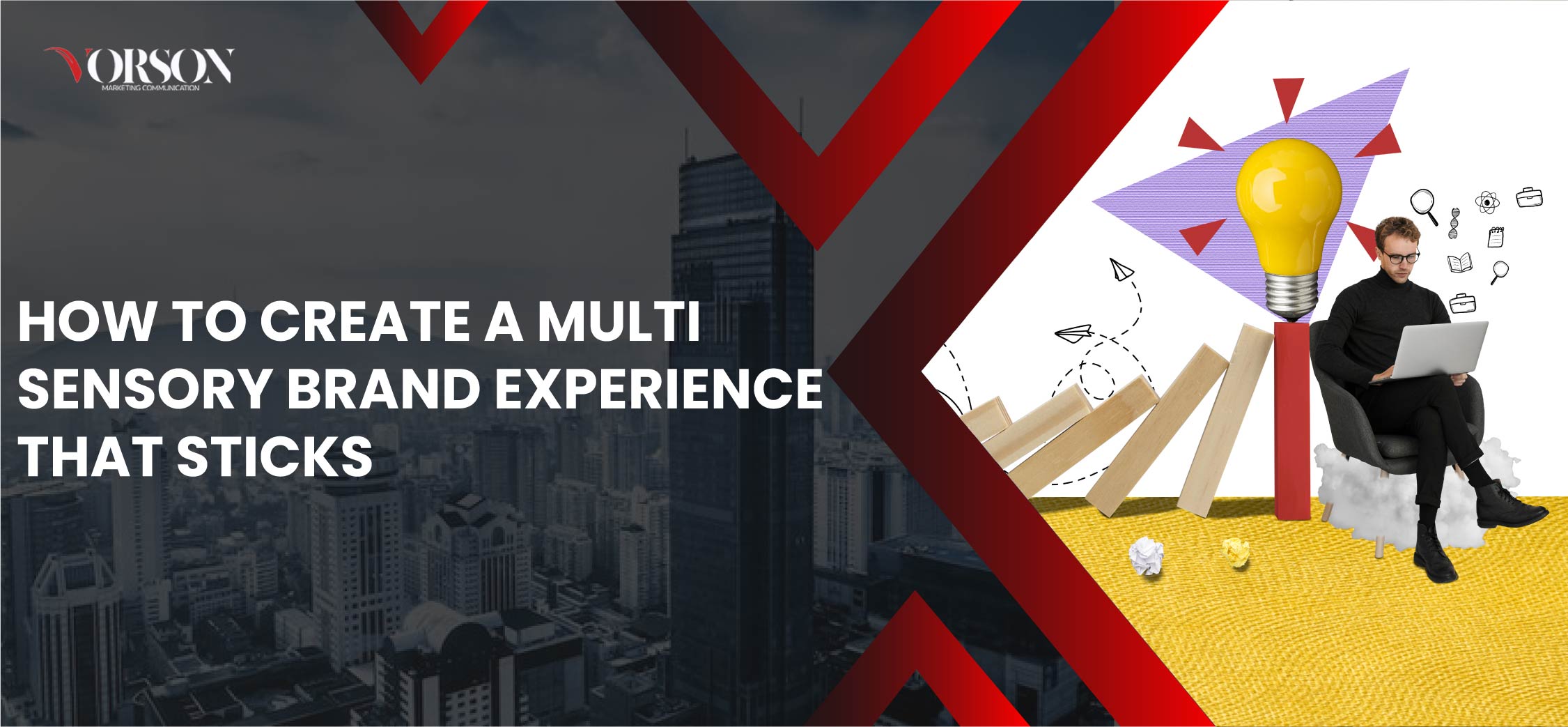With so many ads competing for customers’ attention, companies need to go further than usual to have a lasting mark. A powerful tool for this is multi-sensory branding, that responds to a wide range of senses to build an emotional bond with the target audience.
Multi-Sensory Brand Experience that engage audiences and promote brand loyalty are the specialty of Vorson MarCom, an industry leader in experiential marketing. This article looks into the ways in which businesses can create a memorable brand experience that engages multiple senses.
Multi-Sensory Branding
When brands intentionally attract the customers’ senses of sight, sound, touch, taste, and smell, they are engaging them in multi-sensory branding. Marketers can increase the impact and memorability of their message by addressing various senses.
Research shows that sensory-rich experiences improve customer satisfaction and brand recall. The chance of customers making emotional connections with a brand is increased when it relates to multiple senses. For instance, scent marketing has been used by luxury retailers to establish a pleasant shopping environment, while automotive brands use sound design to increase the attraction of their vehicles.
The Five Senses in Branding
- Sight: Branding depends heavily on visual identity. The way a brand is presented to customers is affected by factors such as colors, logos, packaging, and store layouts. For example, blue represents reliability and steadiness, whereas red represents enthusiasm and speed.
- Sound: Brand recall can be improved with the correct sound. Just consider the startup chirp from Intel or the “I’m Lovin’ It” jingle from McDonald’s. Retail background music also has an effect on customers’ moods and behaviors.
- Touch: Anything from the feel of a product’s packaging to the quality of a business card can have an impact on how a customer experiences it. Using high-quality materials is a common way for premium brands to increase their level on luxury.
- Taste: Branding in the food and drink industry depends mainly on flavor. To build brand loyalty, try offering samples, using characteristic flavors, or linking items to memorable flavor experiences.
- Smell: One effective strategy is scent marketing. People memorize odors more clearly than images, according to research. Customers are more likely to have a positive experience with brands that have unique aromas, such as Abercrombie & Fitch and Starbucks.
Why Multi-Sensory Experiences is Better
An increase in the chance of brand memorization and the strength of emotional connections are both produced by engaging in more than one sense. Studies show that compared to interactions involving just one sense, those involving more than one sense increase remembrance by 80%.
Interactive product displays, engaging brand activations, and engaging event sets are just a few examples of how Vorson MarCom uses multi-sensory branding to produce unique experiences.
How to Create a Multi-Sensory Brand Experience
- Know Your Brand Identity: Make sure your brand messaging is consistent with all sensory aspects. Elegant graphics, smooth textures, and calming sounds are appropriate for a luxury brand, but bright colors and energetic music are more fitting for a youth-oriented business.
- Design Interactive Brand Activations: What makes a brand more engaging are in-store experiences, live events, and product samples. Providing opportunities for customers to physically interact with your brand builds deeper connections.
- Support Technology: Holographic displays, augmented reality (AR), and virtual reality (VR) all have the opportunity to build highly realistic brand experiences. Brands that use interactive digital features differentiate from the crowd and increase engagement.
- Consistency is Key: Every point of contact with a brand, whether online, in packaging, in ads, or in real locations, needs to provide a consistent sensory experience. Brand identity and consumer trust are both strengthened by consistency.
- Measure and Optimize: Find out which sensory aspects are most popular through assessing feedback from customers and data. Advertising strategies can be modified with the use of A/B testing various sensory inputs.
Vorson MarCom’s Expertise in Multi-Sensory Branding
Through impactful experiential marketing campaigns, Vorson MarCom has perfected the art of multi-sensory branding. What they do well includes the following:
- Walls’ “Bari Bachat” Campaign: A campaign to increase brand awareness that resulted in an active presence of the brand in-store, inviting customers to engage with the company’s products.
- Ufone’s “U Tou Babar Hai” Activation: A strong brand event that combines visual appeal, celebrity influence, and audience interaction, a meet-and-greet session with cricket player Babar Azam.
- Jazz Digital Academy Launch: A well planned business gathering that increased the brand’s authority via the use of digital engagement, live presentations, and audience participation.
Conclusion
A successful strategy for making a lasting impression on customers is multi-sensory branding. T o engage with their audience on a more emotional level, organizations should intentionally use sight, sound, touch, taste, and smell. The experiential marketing expertise of Vorson MarCom makes sure that brands are not only noticed, but also remembered.
Contact Vorson MarCom right away to take your marketing plan to the next level and build an unforgettable brand experience!



